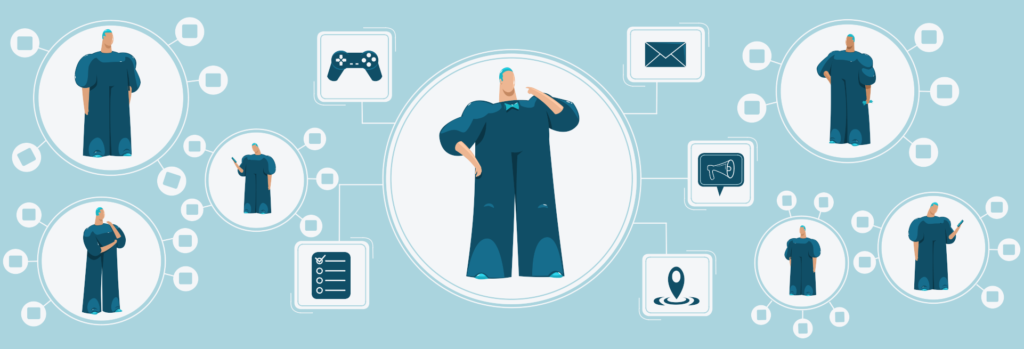Content Personalization – Examples and Tips for Your Marketing Strategy
Content personalization is one of the most popular digital marketing strategies right now. It brings the benefits of improved user experience, increased engagement, and higher revenue.
But do you know what are the main difficulties publishers and marketers face when trying to incorporate content personalization nowadays?
In this article, you’ll learn what content personalization is, what are its benefits and challenges, and how to effectively incorporate it into your marketing strategy!
What is Content Personalization?
Content personalization is the action of delivering content that’s relevant to users’ needs. It relies on user data (e.g., browsing history, location, gender, interests), enabling websites to deliver a quick way for users to find the information they’re looking for.
As a user, you’ve probably experienced this by seeing your name in an email, banners with recommended products, and places or pages that are adjusted to your location.
Why does content personalization matter?
Offering a personalized digital experience nowadays is a must, especially with COVID-19 and the increased number of businesses now operating online.
According to the data, in 2021, there was a 16% increase in users who were likely to become repeating customers after a personalized shopping experience compared to 2017.
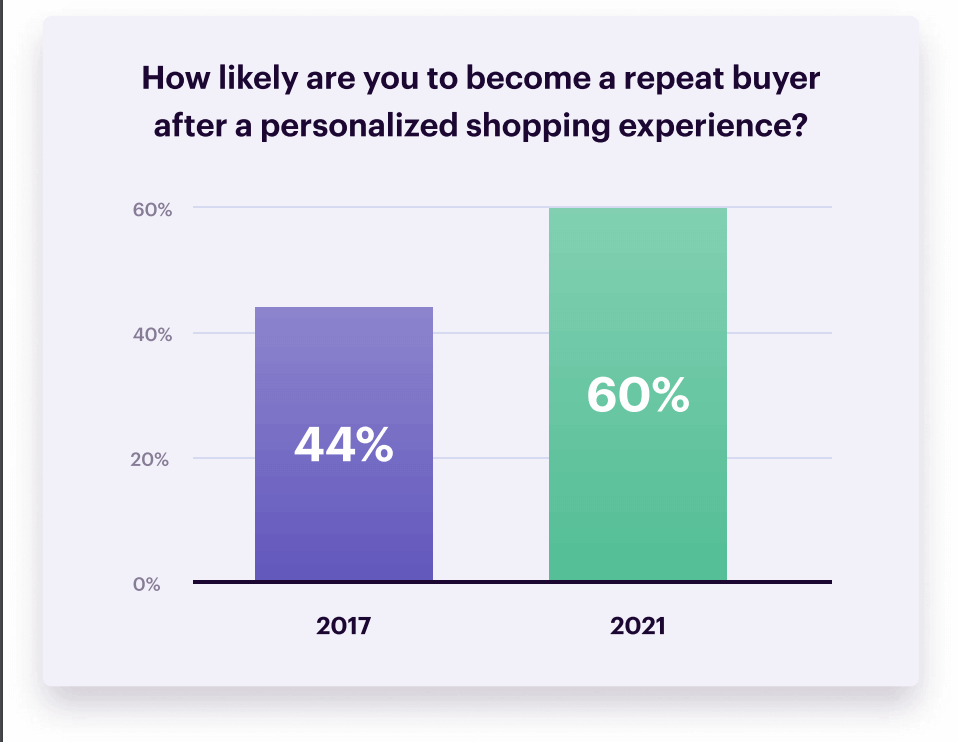
Source: Segment.io
A highly personalized customer experience increases user loyalty and product differentiation.
Product differentiation is what allows you to stand out from your competitors and ultimately boosts brand loyalty and sales.
75% of business leaders agree that personalization is table stakes for digital experiences, while 52% of users agree that personalization improves satisfaction.
Therefore, it’s no surprise that personalization was selected as “ANA’s 2019 Marketing Word of the Year” due to its benefits with user experience, content relevance, and personal approach regarding communication with users.
Examples of personalized contents
We have gathered 6 examples of personalized content to consider for your digital marketing strategy:
- Interactive quizzes–work as an effective content marketing tool, as they drive engagement and leads and personalize the content presented to users. With a quiz maker tool, you can create interactive quizzes from scratch, template, or with AI.
- Retargeted ads–give users a second chance to reconsider services or products they showed interest in. For example, Facebook targets users that have visited your site before, as well as other audiences by adjusting the desired demographics (e.g., age, gender, location, etc.).
- Personalized website experience–allows to tailor landing pages, calls-to-action (CTAs), and hero images to increase the feeling of direct communication to different user profiles.
- GPS-based map apps–target users based on their location and desires suggesting nearest points of interest (e.g., Google Maps).
- Gamification–allows to collect user data from interactive games and boost their engagement with your site.
- Email personalization–allows targeting your subscribers with specific email campaigns, which are more likely to lead them to your website. By sending newsletters with the recipient’s name in the subject line, you establish a more personal touch with the users on your email list. Similarly, you can add product or service recommendations based on previous user interests. When implementing email personalization strategies, marketers should also consider technical aspects of email deliverability. For instance, performing a DKIM record check can help ensure proper email authentication, enhancing the security and trustworthiness of personalized email communications.
The Difference Between Customization and Personalization
With both personalization and customization, you can tailor content according to users’ interests, but the main difference is that personalization doesn’t require direct user assistance while customization does.
Meaning personalization happens without asking users for their preferences. It’s done by analyzing the users’ data and creating a computer algorithm suited for them.
Customization is mainly performed by users–they can make choices and adjust their own preferences.
For example, Spotify uses personalization for some of its playlists. Their personalization algorithm creates or suggests playlists for users according to their liked and previously listened songs.
On the other hand, Nike offers customization services for their products. Users can customize existing sneakers by choosing colors and materials according to their desires.

Therefore, the main difference between customization and personalization depends on who’s pulling in the data and making the adjustments.
Nevertheless, both are designed to help users get what they want quickly and improve the overall user browsing experience.
Implementing personalization, customization, or both (the best case) shows users that you care about their preferences and are willing to pay attention to their needs, strengthening user loyalty and increasing your revenue.
What are The Benefits of Content Personalization?
There are 7 main benefits of content personalization:
- Improves audience engagement and satisfaction.
- Creates more meaningful relationships with users.
- Enables to understand your customers better.
- Increases the number of conversions, leads, and revenue.
- Builds brand awareness, trustworthiness, authority, and user loyalty.
- Increases the average time users spend on your website.
- Lowers bounce rate.
How to Implement Content Personalization Into Your Marketing Strategy?
The core of any content personalization strategy will be generating audience profiles and segmenting them if you want to implement personalization at an individual level.
You should always think carefully about how to manage user data if you want to create an effective personalization strategy.
The 4 main points of consideration should be:
- How to collect and manage data safely?
- How to process this information meaningfully in real-time?
- How to create a seamless cross-channel experience?
- How to demonstrate to users that you know and understand them in a way that resonates with them at every click?
Refining Personalization with Audience Segments
A critical step in elevating content personalization involves the meticulous crafting of audience segments.
By dividing your audience into distinct groups based on shared characteristics—such as demographics, behavior, and purchase history—you can deliver even more targeted and relevant content. This segmentation allows for nuanced strategies that cater to the specific needs and preferences of each segment, thereby enhancing the effectiveness of your personalization efforts.
Utilizing audience segments not only improves user engagement but also significantly increases the likelihood of conversion, as each piece of content is tailored to resonate with the unique interests of different audience groups.
This strategic approach underscores the importance of understanding and leveraging the diversity within your audience to create a more impactful content experience.
To refine your content personalization strategy further, gathering direct feedback from your users is invaluable.
By asking targeted questions across various stages of the customer journey, you can uncover insights that automated data collection might miss. This feedback is crucial for understanding the nuances of user expectations and refining your content to meet those expectations more precisely.
Content personalization is all about utilizing your visitors’ data efficiently. When you narrow it down, the wide range of data acquired can provide an extra competitive edge.
Here are 4 tips on how to effectively organize user data for personalization:
- Gather and personalize information by using different types of user data.
- Demographic data–personalizing content including factors like user’s gender, employment, family, income, and IP address.
- Contextual data–personalizing content taking into consideration the content users have already engaged or currently are engaging with.
- Behavioral data–personalizing content by analyzing previous user browsing actions.
- Gather and process data with machine learning and artificial intelligence. Machine learning and artificial intelligence have made gathering information about users easier, and it’s commonly incorporated into content personalization strategies. AI can help analyze current data and predict future outcomes, better understand customer and competitor behavior, and segment and target audience.
- Analyze and organize data. When you’ve collected user data through various channels (surveys, page navigation, on-site events, etc.), it’s important to find ways to help you organize the data and use it effectively. For this, you can utilize segmentation or data tools, such as Google Analytics and Google Optimize (more tools discussed below).
- Test and adjust your content. After data collection and analysis, you can start to cluster your audience. Once you know your audience, you can see how their customer journey goes and what triggers similar audience types, and then you can adjust your content accordingly to different personas. This creates a more personalized approach. For example, this assures that both Android and iPhone users are satisfied with your offers, as well as users of different incomes and locations.
- Integrating Intelligent Document Processing (IDP) into content personalization strategies harnesses AI to extract and interpret data from diverse sources efficiently. This technology automates the analysis of user preferences and behaviors, enabling the creation of more accurately tailored content. By leveraging IDP, marketers can ensure content not only aligns with individual interests but also significantly boosts user engagement through relevance, marking a significant stride towards personalized user experiences.
Content Personalization Drawbacks
Digital marketers and publishers should take caution when using personalization despite its benefits. Users still have some suspicion, misunderstanding, and mistrust over the use of data for marketing purposes.
A survey below shows that most Americans lack confidence in how companies handle and safeguard sensitive data.
79% of the respondents believe that companies won’t acknowledge their errors and accept the responsibility of misusing personal user data, and 69% admit that they most likely aren’t comfortable with how companies use their data.

Source: Pew Research Center
According to the same survey, 81% of respondents believe that they have no control over the data companies collect about them and that the potential risks outweigh the benefits.
Additionally, Twitter’s ex-head of security Peiter Zatko recently shared his disclosure about Twitter’s careless approach to cybersecurity and data privacy, which can potentially increase user doubts regarding how companies use sensitive information.
In this case, consumer privacy and the freedom to decide which data is collected and which is not are the center of the discussion in this case.
Personalization offers significant potential for marketers to provide users with more relevant communication and experiences and grants benefits only if data is used with caution and proper security.
User data privacy, regulations and safeguarding
The future of the free and open web is at risk if digital advertising doesn’t advance to address the rising issues users have about their privacy and how their identity is being used.
Since Google announced that they’re phasing out third-party cookies, there’s been a rise in user ID and internet cookie alternatives.
A survey shows that 80% of companies use first-party data, which is collected from the company’s interaction with its users. It has recently come into the spotlight because of technological advancements and the rise of debate about data safety.
In fact, 53% of companies have said that they focus on using first-party data for personalization because it provides higher quality, 46% said that this data is easier to manage because they own it, and 45% said that it provides better privacy for users.

Additionally, 70% of publishers believe that first-party data will be beneficial in the future, as it helps to build more accurate audiences and manage the gathered data more effectively.
If you as a publisher don’t do it already, there are ways that help with this data collection, such as commenting tools that require users to sign up and newsletter-exclusive content.
The survey also shows that for 55% of users, one of the most important aspects in choosing a brand is its trustworthiness and transparency.
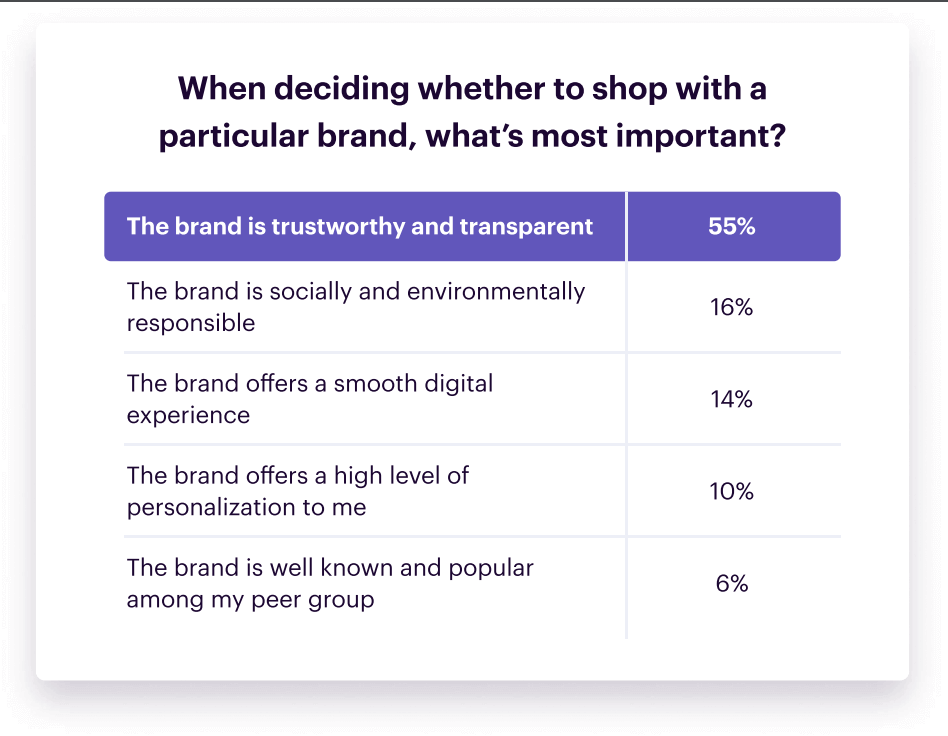
Regarding this, companies need to work on how they communicate with their users to ensure that the user data and privacy are safe and that the gathered information is used only to enhance the user experience.
For example, Apple’s App Tracking Transparency requires apps to get the users’ permission before tracking their data across different apps or websites owned by other companies.
Apple’s Privacy Nutrition Labels give users an easy-to-view summary of developers’ privacy practices in apps.
In addition, government regulations, such as the EU General Data Protection Regulation (GDPR), are meant to lay down the rules which relate to protecting, processing, and moving personal data of natural persons.
Nevertheless, users increasingly desire personalized experiences and are willing to share their data to get them.
According to the survey above, 69% of users say that personalization is acceptable as long as it uses the information they have directly provided to a company.
To truly elevate your marketing strategy, it’s essential to not only personalize content but also to curate a comprehensive content experience.
This approach transcends traditional personalization by crafting an environment where every piece of content a user encounters is aligned with their individual journey and preferences, significantly enhancing engagement and conversion rates.
Useful Tools for Content Personalization
We have identified 5 useful content personalization tools you can incorporate into your marketing strategy:
1. Salesforce
Salesforce is a real-time multichannel personalization tool that helps to create customer profiles, track and target their behavior, segment users, and improve the user experience across different platforms, such as websites, email, mobile, apps, etc.

2. Piano
Piano is the leading personalization and conversion rate optimization platform, which helps publishers to manage data, personalize content, segment audiences, and increase digital subscriptions with its AI prediction tool.
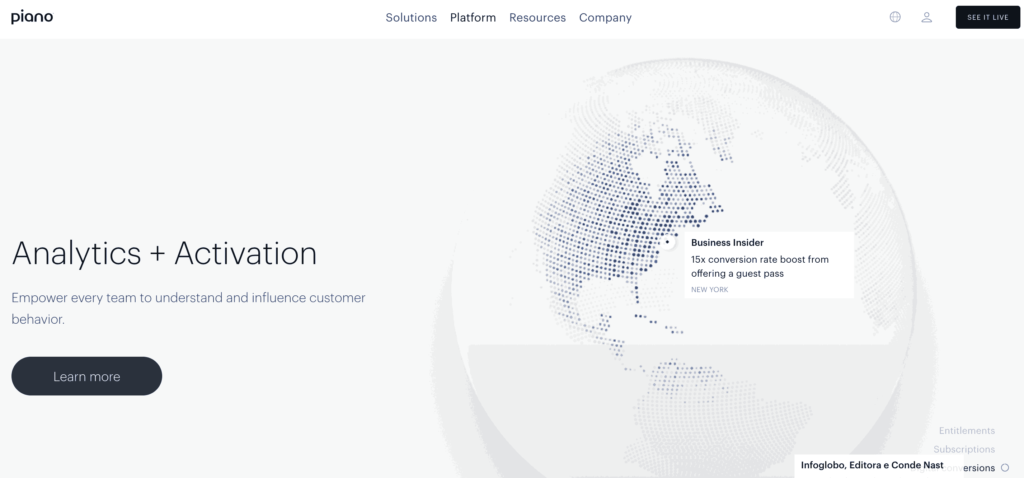
3. Segment
Segment is primarily designed to classify and arrange users according to their web traffic. Its identity resolution tool syncs information from users who found their way to your website and then examines the many paths and channels that brought them there.
This platform also tags these visits with traits that categorize users into audiences using its trait-building tools.
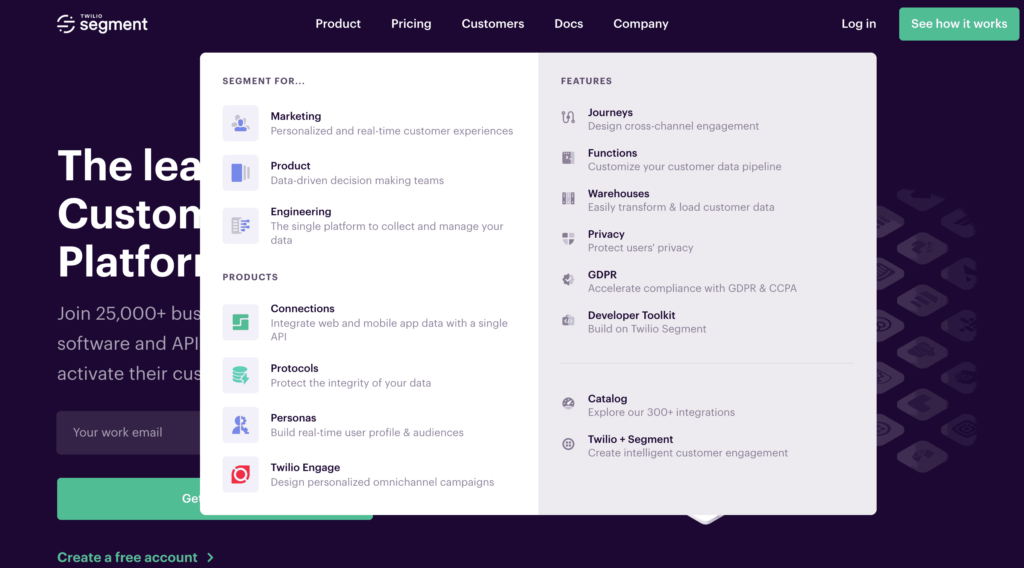
4. Google Optimize
Google Optimize is the leading personalization tool for sites linked to Google Analytics. It offers advanced targeting, website performance analysis with suggestions for areas to improve, and statistical tests and experiments.
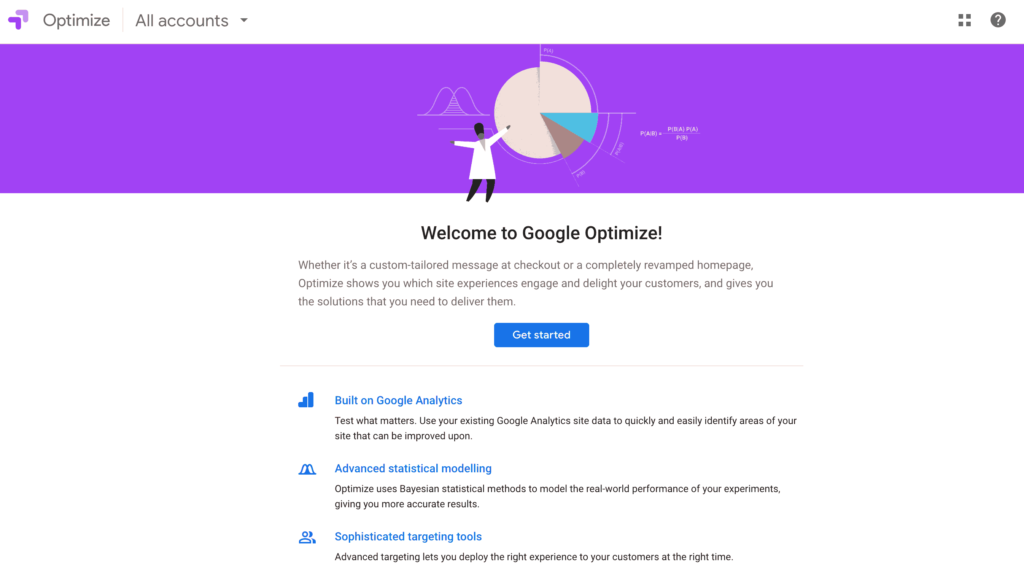
5. Personyze
Personyze is a multi-channel personalization tool that has a recommendation engine and offers on-site and email targeting with an end-to-end personalized experience to website visitors.

Conclusion
Without a doubt, more effective and precise personalization will be expected in the future. We know that it’s already a necessity today, but there’s still a gap between what companies are offering and what users really want.
As long as you can manage user data properly, the benefits of personalization will outweigh the disadvantages.
Do you have any questions regarding content personalization in your digital marketing strategy? Reach out to us at [email protected].
